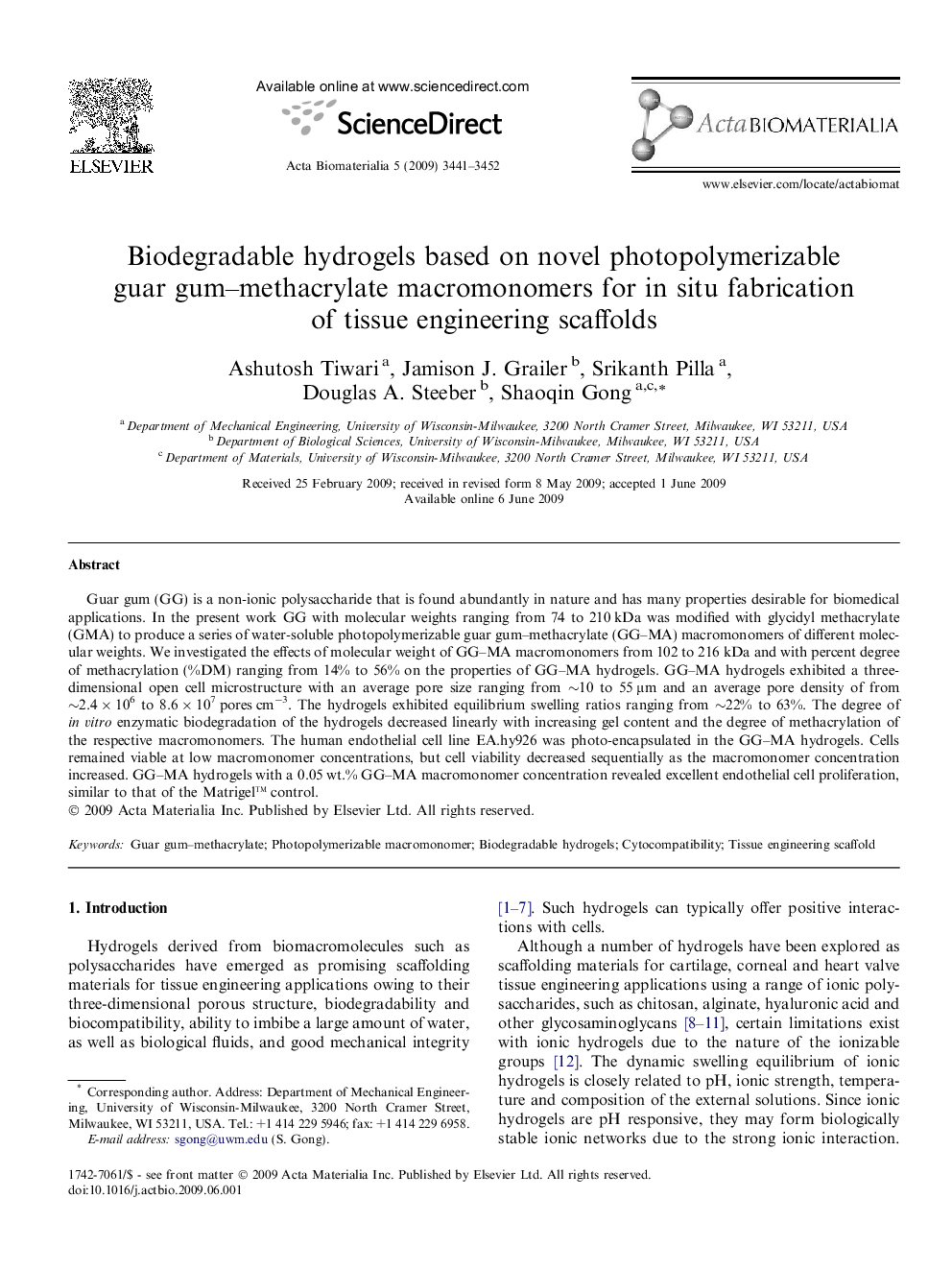| Article ID | Journal | Published Year | Pages | File Type |
|---|---|---|---|---|
| 1872 | Acta Biomaterialia | 2009 | 12 Pages |
Guar gum (GG) is a non-ionic polysaccharide that is found abundantly in nature and has many properties desirable for biomedical applications. In the present work GG with molecular weights ranging from 74 to 210 kDa was modified with glycidyl methacrylate (GMA) to produce a series of water-soluble photopolymerizable guar gum–methacrylate (GG–MA) macromonomers of different molecular weights. We investigated the effects of molecular weight of GG–MA macromonomers from 102 to 216 kDa and with percent degree of methacrylation (%DM) ranging from 14% to 56% on the properties of GG–MA hydrogels. GG–MA hydrogels exhibited a three-dimensional open cell microstructure with an average pore size ranging from ∼10 to 55 μm and an average pore density of from ∼2.4 × 106 to 8.6 × 107 pores cm−3. The hydrogels exhibited equilibrium swelling ratios ranging from ∼22% to 63%. The degree of in vitro enzymatic biodegradation of the hydrogels decreased linearly with increasing gel content and the degree of methacrylation of the respective macromonomers. The human endothelial cell line EA.hy926 was photo-encapsulated in the GG–MA hydrogels. Cells remained viable at low macromonomer concentrations, but cell viability decreased sequentially as the macromonomer concentration increased. GG–MA hydrogels with a 0.05 wt.% GG–MA macromonomer concentration revealed excellent endothelial cell proliferation, similar to that of the Matrigel™ control.
